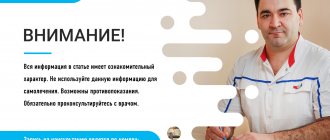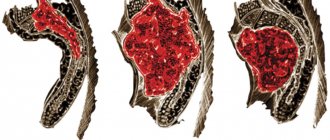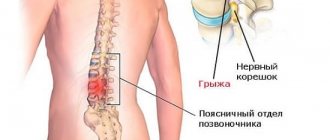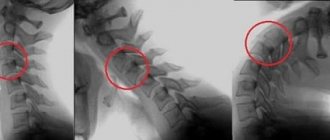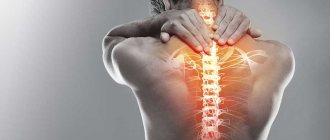Conductive blockade
- one of the effective ways to relieve pain symptoms.
The mechanism of its action is based on blocking nerve impulses that transmit information to the brain about the existing source of pain. This allows you to temporarily reduce the pain threshold and perform surgery. However, conduction anesthesia
can be used not only as one of the elements of modern anesthesia, but also as a therapeutic agent in patients who suffer from chronic pain syndrome. Thanks to it, the effect of pain relief will be achieved as quickly as possible, while the risk of complications will be minimized. Conduction anesthesia in Moscow can be performed in the multidisciplinary clinic CELT. We employ experienced specialists who have modern equipment and effective drugs at their disposal.
At CELT you can get advice from a specialist algologist.
- Initial consultation – 4,000
- Initial consultation with the head of the Pain Clinic - 4,500
Make an appointment
Peripheral blockade under ultrasound navigation RUB 5,000.
15 minutes
(duration of procedure)
Types of conduction blockades
Types of conduction anesthesia
are distinguished based on various parameters:
- method of influence;
- drugs used;
- purpose of application;
- localization;
- developer
All types of blockades are presented in the table below:
| View | Peculiarities |
| Drug therapy | |
| Local: periarticular, perineural | The injection is made directly into the site of the lesion, around the affected areas or under them: into periarticular tissues or channels through which nerves pass |
| Segmental: paravertebral, vertebral | They have an analgesic effect through crossed nerve fibers. Provide for the introduction of drugs into the paravertebral region in order to relieve pain, reduce swelling, relieve spasms |
| Classification by drugs used | |
| Monocomponent | One drug is used |
| Dicomponent | Two drugs are administered |
| Multicomponent | More than two drugs are used |
| Classification by purpose of use | |
| Medicinal | A safe technique that eliminates pain syndromes or is part of a complex treatment for pathologies accompanied by severe pain |
| Diagnostic | Aimed at identifying the causes of pain as accurately and quickly as possible and making the correct diagnosis. The mechanism of conduction pharmacological blockade is such that when an anesthetic is introduced into the “pain generator” it subsides, thanks to which the doctor is able to make a more accurate diagnosis |
| Classification by localization | |
| Spinal block: intercostal, lumbar, neck | It has an analgesic and therapeutic effect, allows you to treat vertebral hernia, and is carried out under the control of a fluoroscope. It is used for the following diseases:
|
| Joint blockade: knee, shoulder | Relieves pain, restores mobility and function of the limbs, injection is carried out directly into the affected area. Applicable for:
|
| Sciatic nerve block | The drug is administered directly into the nerve, thereby blocking the transmission of impulses along the nerve trunk. Allows you to eliminate pain, inflammation, spasms |
| Classification by developer | |
| According to Vishnevsky: intrapelvic, intercostal, intravenous, paravertebral | Different types of conduction novocaine blockades, which are carried out to interrupt pain impulses during:
|
| According to Catlen | The injection is carried out into the opening of the sacral canal and is used for osteochondrosis |
Indications for blockade for inflammation of the piriformis muscle
The main symptom of this pathology is continuous pain in the affected buttock of a pulling, aching nature, spreading to the hip joint. The pain intensifies when the patient is standing, half-squatting, and while walking; it decreases slightly when sitting with legs apart or lying down.
Compression by spasmodic muscle fibers of the sciatic nerve is manifested by burning or pulling pain along the back surface of the lower limb to the foot, a feeling of numbness, and chilliness. Many patients develop intermittent claudication - which occurs during long walking, accompanied by pain, forcing the person to stop, sit down or lie down to rest.
The muscle has the shape of an isosceles triangle. It originates from the pelvic surface of the sacrum at the level of 2-4 vertebrae, leaves the pelvic cavity through the greater sciatic foramen and is attached to the greater trochanter of the femur. The main function of the muscle is external rotation of the thigh with some abduction.
Kazieva Aminat Ziyavovna
Neurologist
Rostov State Medical University
Experience since 2012
Below this muscle is the sciatic nerve, which exits the pelvic cavity. Behind it lies the surface of the bone and ligament.
In some situations, muscle fibers become overly tense - they spasm. This leads to a number of unpleasant symptoms for the patient, forcing him to seek medical help. Compression by the spasmodic muscle of the sciatic nerve causes inflammation of the nerve fibers, makes the clinical picture of the disease even more vivid, and significantly worsens the patient’s condition.
What medications are used?
Conducting conduction anesthesia
involves the use of various medications. Their selection is carried out individually, depending on the patient’s indications and the characteristics of the case. We invite you to familiarize yourself with the features of the drugs that are most often used during conduction blockades. They are presented in the table below:
| Drug name | Peculiarities | Advantages and disadvantages |
| "Novocaine" | It is a transparent solution with a percentage of 0.25% to 2%. It is most often used for blockades | Provides a quick pain relief effect (within 2 - 7 minutes), which lasts about 2 hours. May cause allergies and vascular reactions |
| "Lidocaine" | A frequently used drug that has an increased therapeutic index | It is characterized by low toxicity, high permeability, absence of allergic and other negative reactions. Provides pain relief effect for several hours |
| "Merkain" | Local anesthetic, has an analgesic effect no earlier than 10-20 minutes after administration. Used to block peripheral nerves | It has a prolonged effect, which can last from 3 to 5 hours. May have negative effects on the kidneys, liver and heart |
| "Hydrocortisone" | Steroid hormone in the form of a suspension for injection | Requires mixing with anesthetic. Gives good results when performing intra-articular blockades |
| "Dexamethasone" | A hormonal drug whose activity is thirty times higher than that of Hydrocortisone. Used for blockades of soft tissues and joints | Does not affect electrolyte metabolism. Has a quick but short-lasting effect |
How much does the procedure cost?
In the multidisciplinary clinic CELT, the cost of the blockade ranges from 5 thousand rubles. You can find out the exact cost of the procedure in the corresponding section of our website, by calling us or visiting a consultation. The cost of the procedure depends on the following factors:
- type of drugs used;
- the affected part of the spine on which the procedure will be performed;
- equipment that will be involved in the process.
How is the blockade carried out?
There are different techniques for carrying out blockades. Their choice is made individually, depending on the case and the patient’s indications. Conductor blockade is a procedure for administering drugs by injection into the tissue surrounding a nerve in order to anesthetize certain areas of the body. The drug used is usually a solution of novocaine, which is slowly injected through a syringe needle. The effect occurs almost immediately and covers the desired area.
| Type of blockade | Indications for use | Features of the event |
| Paravertebral |
|
|
| Epidural |
|
|
Causes of Piriformis Syndrome
Lead to pathology:
- degenerative-dystrophic diseases of the spine;
- injuries to the lower back, pelvic area, buttocks;
- excessive physical stress on the lower back and sacroiliac joint;
- myositis, bursitis, hematomas, abscesses in the gluteal region;
- neuroma of the sciatic nerve;
- inflammatory or tumor diseases of the pelvic organs;
- arthritis of the hip or sacroiliac joint;
- hip replacement.
Possible complications
If you want to minimize the risk of complications from conduction anesthesia
in Moscow, contact the CELT clinic. Our doctors have performed this procedure many times and know how to avoid them. It is customary to distinguish the following types of complications:
- toxic - arise as a result of incorrect selection of dosage and concentration of the drug or its penetration into the vascular bed, characterized by various symptoms: from dizziness to falling into a coma;
- inflammatory - appear as a result of improper procedure, use of an inappropriate or expired drug, and are characterized by the development of periostitis, meningitis;
- allergic - characterized by various symptoms, ranging from itching and drop in blood pressure to difficulty breathing and cardiac arrest;
- traumatic - consist of damage to blood vessels, nerves, pleural or abdominal cavity during a procedure with corresponding symptoms.
Principles of treatment
An integrated approach is used in treatment. Its main components:
- peace;
- non-steroidal anti-inflammatory drugs (help reduce pain and inflammation);
- muscle relaxants (designed to relax spasmodic muscle fibers);
- antidepressants, anti-anxiety drugs (help to calm the patient, reduce his anxiety, relieve pain);
- at the recovery stage - passive muscle stretching, relaxing massage, exercise therapy, physiotherapy.
If the piriformis muscle syndrome is of a secondary nature - it has developed as a consequence of other diseases of the pelvic organs or spine, in parallel with the therapeutic measures to eliminate it, the underlying pathology is also treated with possible consultation of specialized specialists - a neurologist, urologist, gynecologist and others.
If the symptoms of the disease are pronounced and you need to quickly alleviate the condition, then a blockade of the piriformis muscle is performed. After this, other therapeutic measures are carried out.
Advantages of conduction blockades
Today, there are a number of techniques that allow you to relieve pain... However, blockades remain the “leaders” in this area. And all because they have a number of advantages:
- High effectiveness of drugs due to the proximity of the injection to the affected area;
- Almost instantaneous effect of pain relief due to the rapid penetration of the medicine into the affected area;
- Minimum number of side effects due to the absence of drugs entering the general bloodstream;
- The possibility of repeating the procedure and achieving an analgesic and therapeutic effect.


